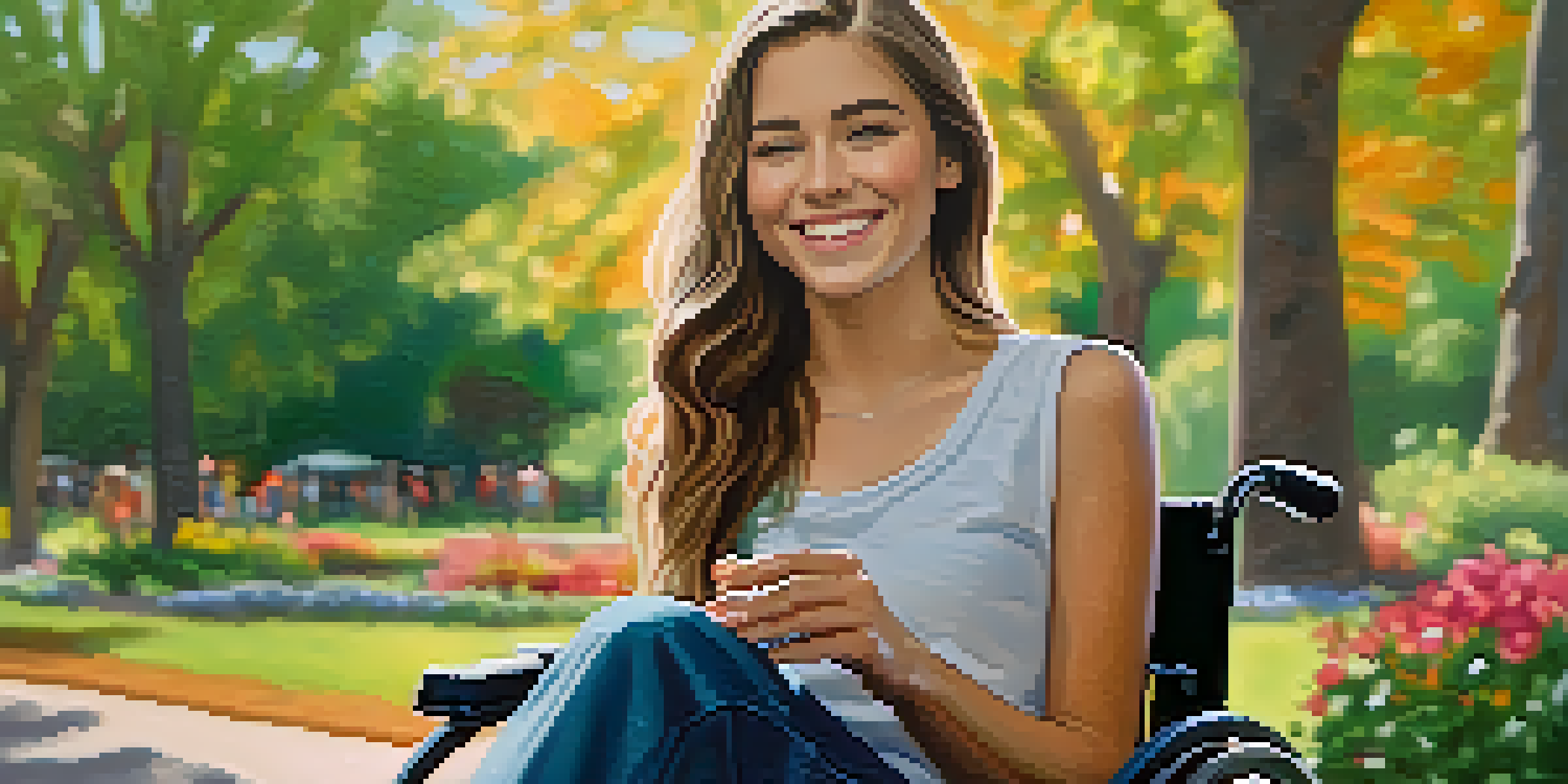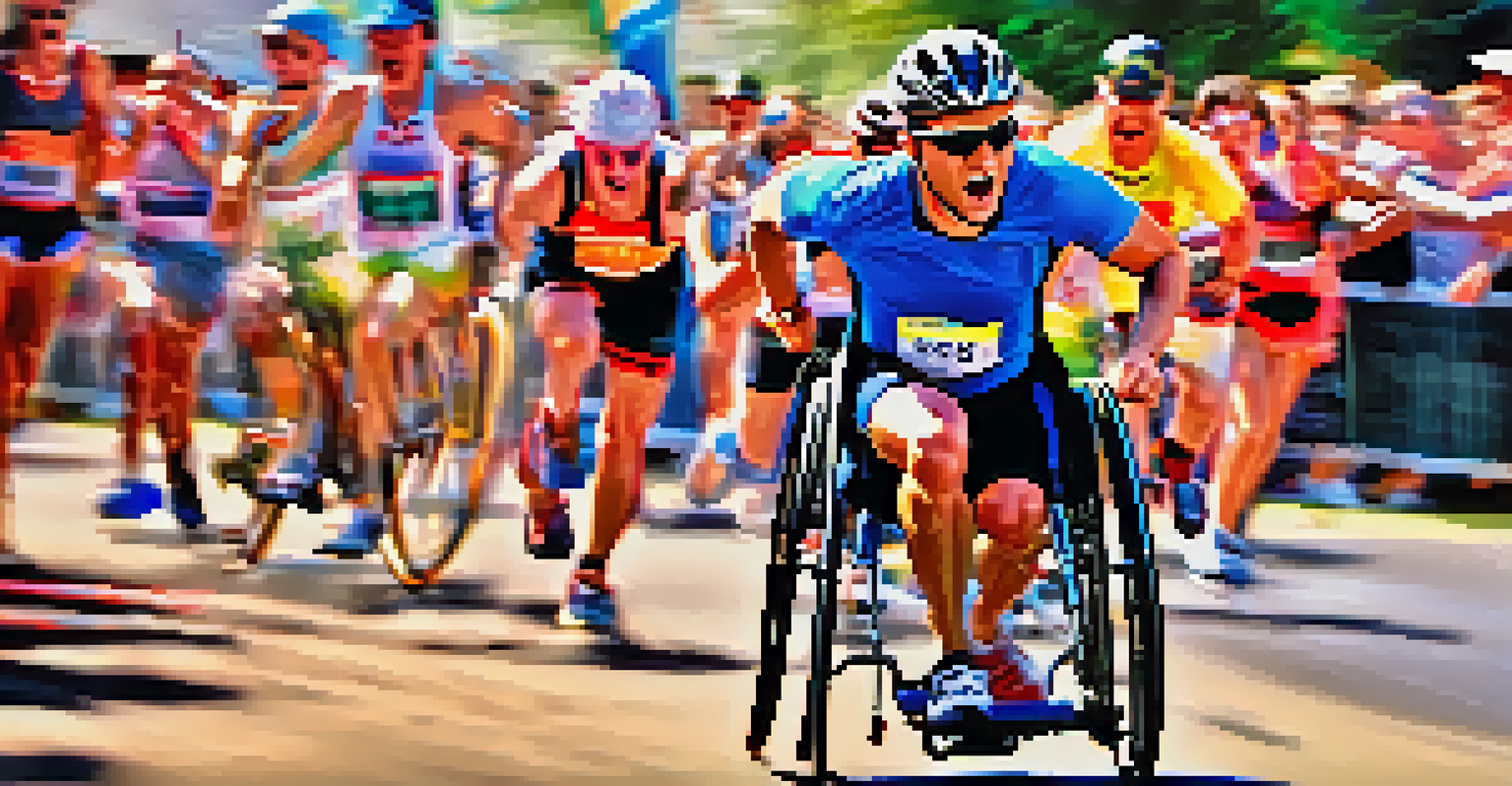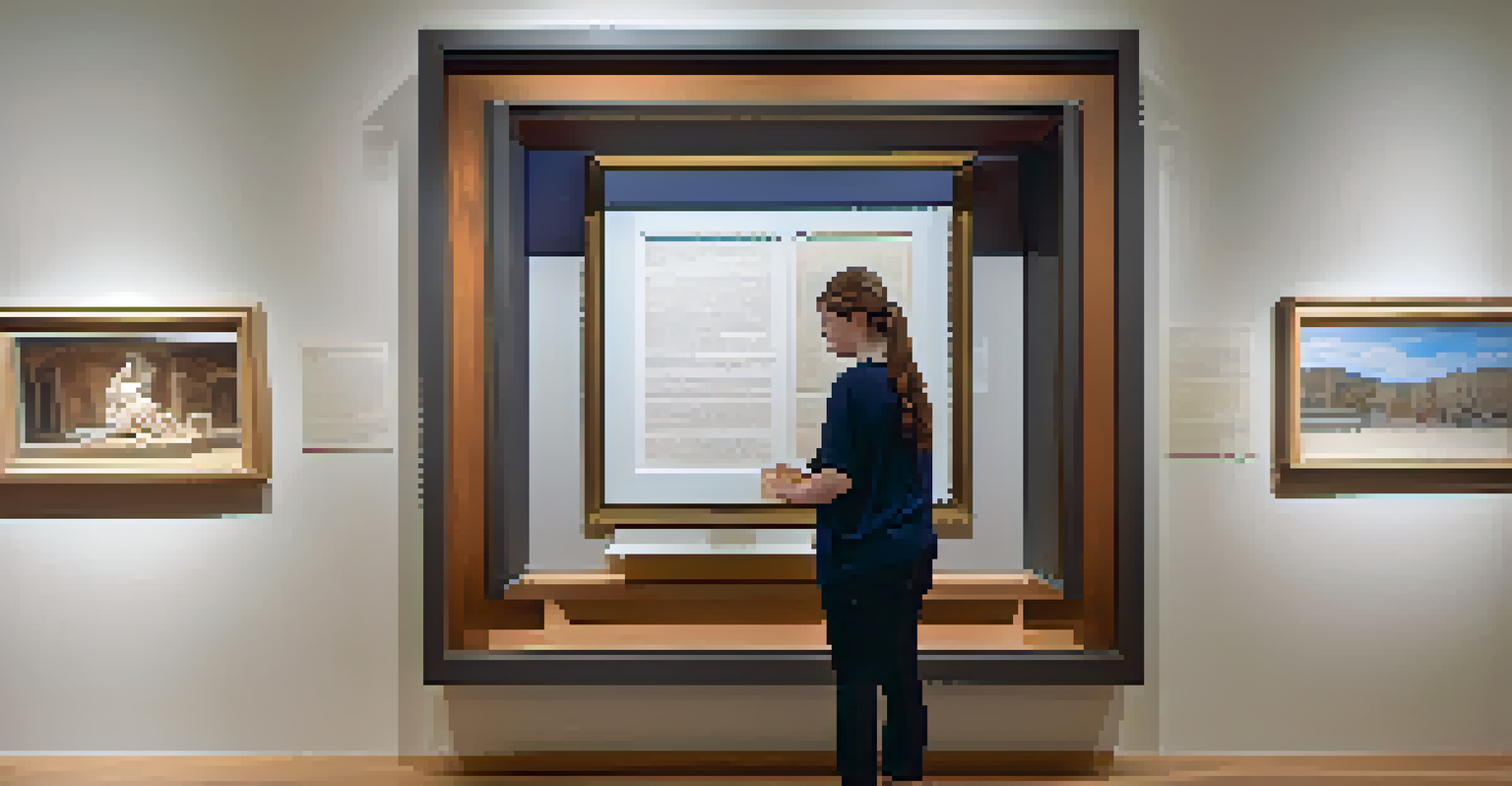The Role of Photography in Representing Disability Issues

Photography as a Tool for Awareness and Advocacy
Photography has the power to capture moments that tell compelling stories. In the context of disability, it can raise awareness about the challenges faced by individuals. By showcasing real-life experiences, photographers can advocate for social change and greater inclusion.
Photography can capture a moment and tell a story that transcends language and culture.
For instance, a striking image of a person with a disability navigating a public space can provoke thought and discussion. It highlights not just the barriers they face but also their resilience. This visual storytelling can inspire audiences to engage with disability issues more deeply.
As a medium, photography transcends language and cultural barriers, making it an effective tool for advocacy. It can evoke empathy and understanding, prompting viewers to reconsider their perceptions of disability. Ultimately, powerful images can mobilize communities toward positive change.
Challenging Stereotypes Through Visual Representation
Photography plays a crucial role in challenging stereotypes associated with disability. Often, media portrayals focus on limitations rather than abilities, perpetuating negative narratives. However, photographers can shift this perspective by capturing people with disabilities in diverse, empowering roles.

For example, a series of portraits featuring athletes with disabilities highlights their strength and determination. This not only redefines societal expectations but also encourages individuals with disabilities to pursue their passions. By showcasing varied experiences, photography can dismantle harmful stereotypes.
Photography Fosters Disability Advocacy
Photography serves as a powerful tool to raise awareness about disability issues and advocate for social change through compelling visual storytelling.
Moreover, when photographers include individuals with disabilities in everyday, relatable scenarios, it fosters a sense of normalcy. This representation helps to humanize disability, encouraging broader acceptance and understanding within society. The result is a richer, more nuanced portrayal of the disability experience.
The Emotional Impact of Photography on Disability Narratives
Photography evokes emotions, making it a powerful medium for storytelling, especially regarding disability. An image can convey a wide range of feelings, from joy to struggle, allowing viewers to connect with the subject on a personal level. These emotional connections can provoke awareness and inspire action.
A photograph is a secret about a secret. The more it tells you, the less you know.
Consider a photograph that captures a moment of triumph, such as a person crossing a finish line in a wheelchair race. The image not only tells a story of achievement but also resonates with anyone who has faced obstacles. Such powerful narratives can motivate others to reflect on their own challenges and triumphs.
By focusing on the emotional aspects of disability, photographers can foster empathy and understanding. This deeper emotional engagement can inspire audiences to support advocacy efforts or participate in community initiatives. Ultimately, the emotional resonance of photographs can lead to meaningful conversations about disability.
Ethics of Representing Disability in Photography
With great power comes great responsibility, especially in photography. When capturing images of individuals with disabilities, ethical considerations are paramount. Photographers must prioritize consent, respect, and representation to avoid perpetuating stereotypes or exploitative narratives.
For example, obtaining informed consent ensures that subjects feel comfortable and respected in their portrayal. Additionally, photographers should aim to depict individuals in ways that honor their experiences and identities. This approach not only fosters trust but also enriches the narrative being told.
Challenging Stereotypes Visually
By capturing individuals with disabilities in diverse and empowering roles, photographers can effectively challenge negative stereotypes and promote acceptance.
Ethics in photography also involves considering the broader impact of images. Thoughtful representation can help challenge societal misconceptions, while careless portrayals can reinforce damaging stereotypes. By adhering to ethical guidelines, photographers can contribute positively to the discourse surrounding disability.
The Role of Community in Photography Projects
Community involvement is essential in photography projects that focus on disability issues. Collaborating with individuals from the disability community can provide invaluable insights and ensure authentic representation. This partnership fosters a sense of ownership and agency among participants.
For instance, community photography projects can empower individuals with disabilities to share their own stories. By equipping them with cameras and training, photographers can help amplify voices that are often marginalized. This collaborative approach not only enriches the narrative but also builds community connections.
Moreover, showcasing community-driven photography can inspire others to engage with disability issues. When viewers see authentic representations created by individuals with disabilities, it cultivates understanding and respect. Ultimately, community involvement enhances the impact of photographic storytelling.
The Intersection of Technology and Disability Representation
Advancements in technology have transformed the way photography represents disability. From smartphones to social media, these tools provide new avenues for storytelling and sharing experiences. This democratization of photography allows more individuals to contribute to the disability narrative.
For example, platforms like Instagram enable photographers and individuals with disabilities to share their stories widely. This visibility can challenge existing stereotypes and foster a diverse range of representations. Technology empowers individuals to control their narratives and engage with broader audiences.
Ethics and Community in Representation
Ethical considerations and community involvement are crucial in photography to ensure respectful representation and authentic storytelling of disability narratives.
Additionally, innovations in assistive technology, such as adaptive cameras, allow individuals with disabilities to participate in photography. These tools enhance accessibility, ensuring that everyone has the opportunity to capture and share their stories. As a result, the representation of disability becomes richer and more varied.
Future Directions in Disability Representation through Photography
The future of disability representation in photography holds exciting potential. As awareness of disability issues continues to grow, so does the opportunity for diverse narratives to emerge. Photographers have the chance to redefine how society perceives disability through innovative storytelling methods.
Emerging trends, such as virtual reality (VR) and interactive photography, can provide immersive experiences that foster understanding. These technologies allow viewers to step into the shoes of individuals with disabilities, promoting empathy and awareness. As these tools evolve, they may revolutionize how disability is represented.

Ultimately, ongoing dialogue about representation and ethics will shape the future of photography in this space. By prioritizing authenticity, community involvement, and ethical storytelling, photographers can contribute to a more inclusive narrative. The journey toward better representation of disability is ongoing, but the possibilities are limitless.